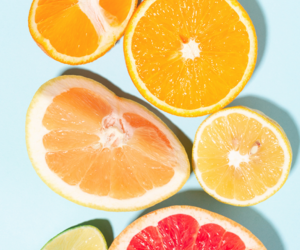BARTOW, Fla. – Current beverage labeling regulations appear to fall short of helping parents identify the ingredients, sugar and juice makeup of beverages they purchase for their children, a recent study published in Pediatric Obesity suggests. This has researchers calling for changes to beverage labeling regulations to increase transparency and help consumers choose healthier beverages.
The experimental online study included over 1,600 parents who had healthy children aged 1 to 5 years old. Parents were shown product label information for commonly consumed children’s beverages, including flavored waters, 100% fruit juice, and juice drinks and other beverages containing added sugars or non-nutritive (artificial) sweeteners. Some parents were shown only front labels, while some were shown both front and back or side labels which included the Nutrition Facts panel and other information. Study participants then answered questions concerning the sugar and percent juice content of the beverages.
About one-third of participants indicated they were not confident they could identify the added sugar and juice content of beverages. Only about half of study participants (48 percent) said they looked at the Nutrition Facts panel all or most of the time when choosing beverages for their children.
Overall, participants frequently underestimated the percent of juice in 100% fruit juice. Even though the percent juice was stated on the package front for the 100% fruit juice product in the study, only 51 percent of parents who were shown only the package front correctly identified the juice percentage. When exposed to additional information on the back and side panels, 37 percent still could not correctly identify the percent juice and 40 percent incorrectly said that 100% juice contained added sugars.
Conversely, participants frequently overestimated the amount of pure fruit juice in sugar-sweetened juice drinks and beverages. For an added-sugar product that looks similar to 100% orange juice but contains only 5 percent juice, almost all participants (98 percent) could not accurately state the amount of pure juice just by looking at the front of the label and, on average, estimated that the product contained 45 percent pure fruit juice, 40 percent higher than the actual juice content. Fewer than half of participants who additionally looked at back/side labels could correctly identify the percent juice content and, on average, estimated that the beverage contained 24 percent pure juice. For beverages that are not 100% fruit juice there is no requirement to identify sweeteners or juice content on the front label.
“The results are striking and this study suggests that labels for 100% fruit juice and fruit beverages or drinks are not working as intended and for many parents may result in misunderstandings and confusion when trying to choose healthful beverages for their children,” said Gail Rampersaud, registered dietitian nutritionist in the Scientific Research Department of the Florida Department of Citrus. “Consumers need more education coupled with labels that are clearer and easier to understand,” added Rampersaud.
The results suggest that lack of knowledge and clear labeling may lead parents to choose less healthy added-sugar beverages over 100% juices, such as 100% orange juice. The researchers suggest that the Food and Drug Administration allow label declarations that will increase transparency concerning juice percentage and sweetener content, particularly on front of package, to help consumers make healthful beverage choices.
PubMed abstract link: https://pubmed.ncbi.nlm.nih.gov/33829664/
About the Florida Department of Citrus
The Florida Department of Citrus is an executive agency of the Florida government charged with the marketing, research and regulation of the Florida citrus industry. Its activities are funded by a tax paid by growers on each box of citrus that moves through commercial channels. The industry employs more than 33,000 people, provides an annual economic impact of $6.762 billion to the state, and contributes hundreds of millions of dollars in tax revenues that help support Florida’s schools, roads and health care services. For more information about the Florida Department of Citrus, please visit FloridaCitrus.org/newsroom.
